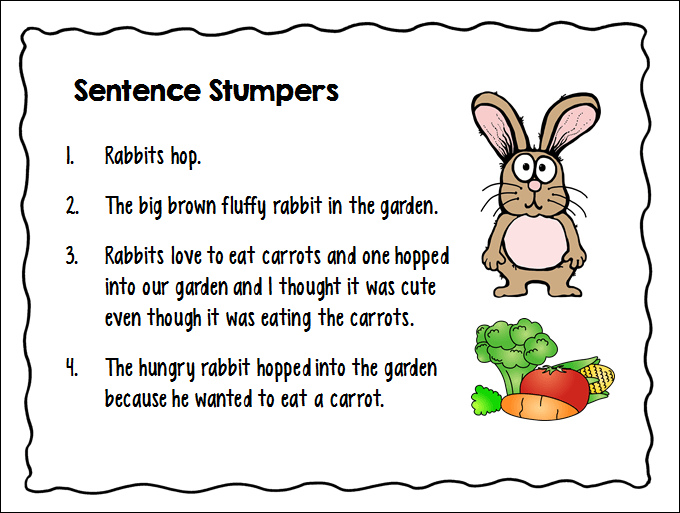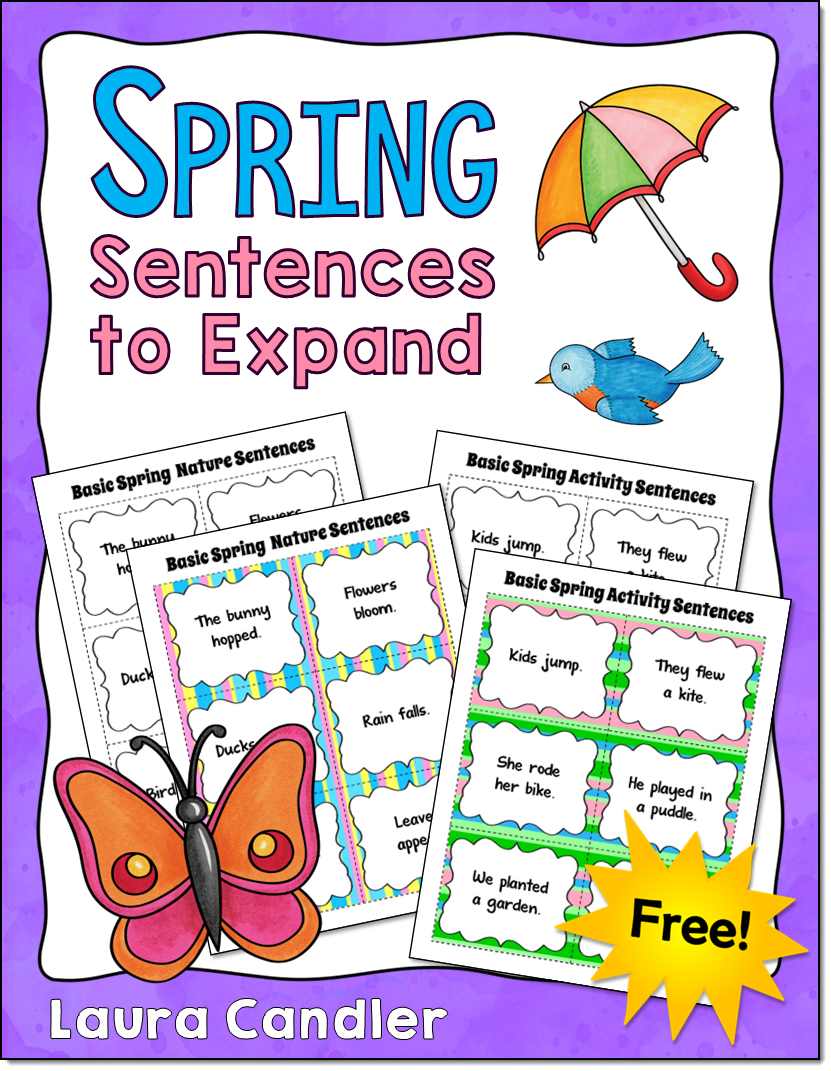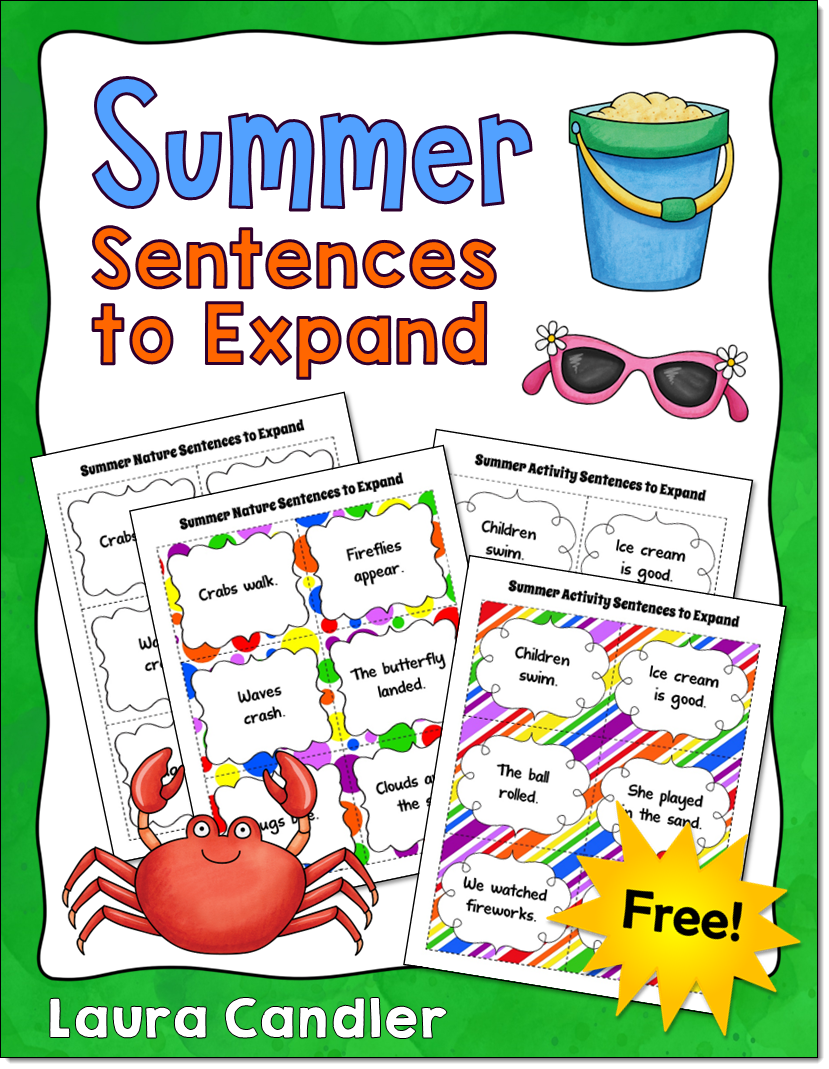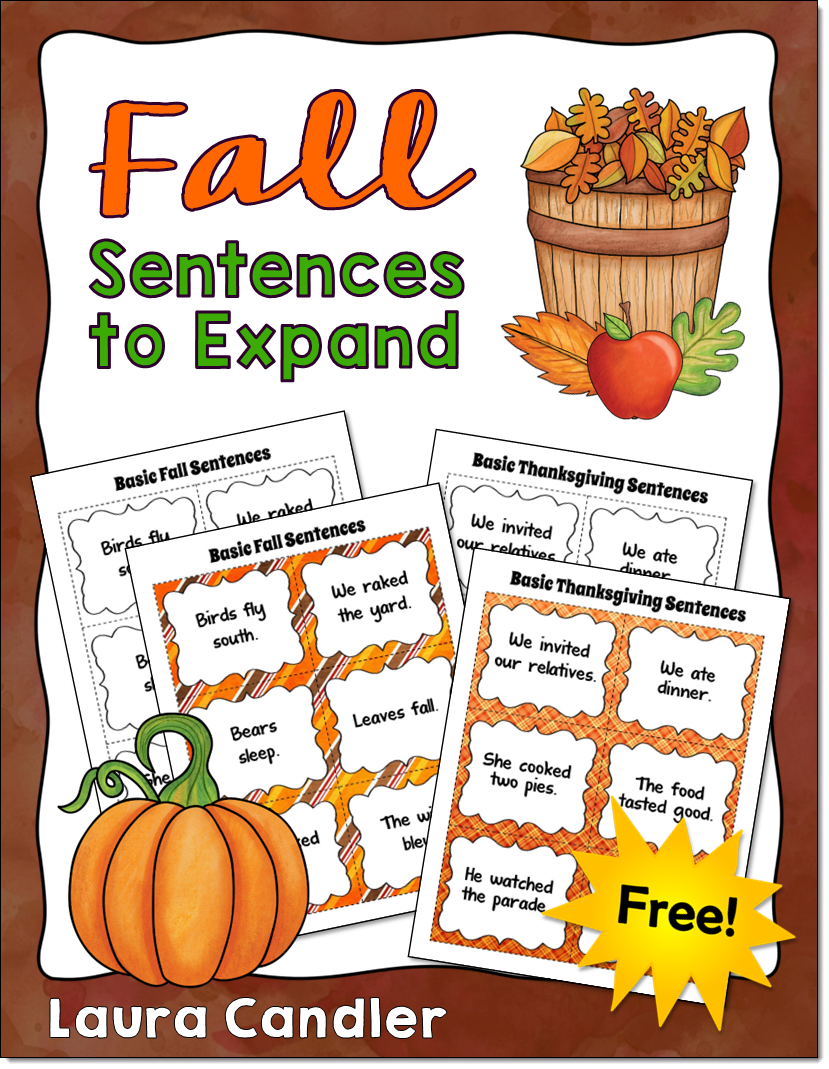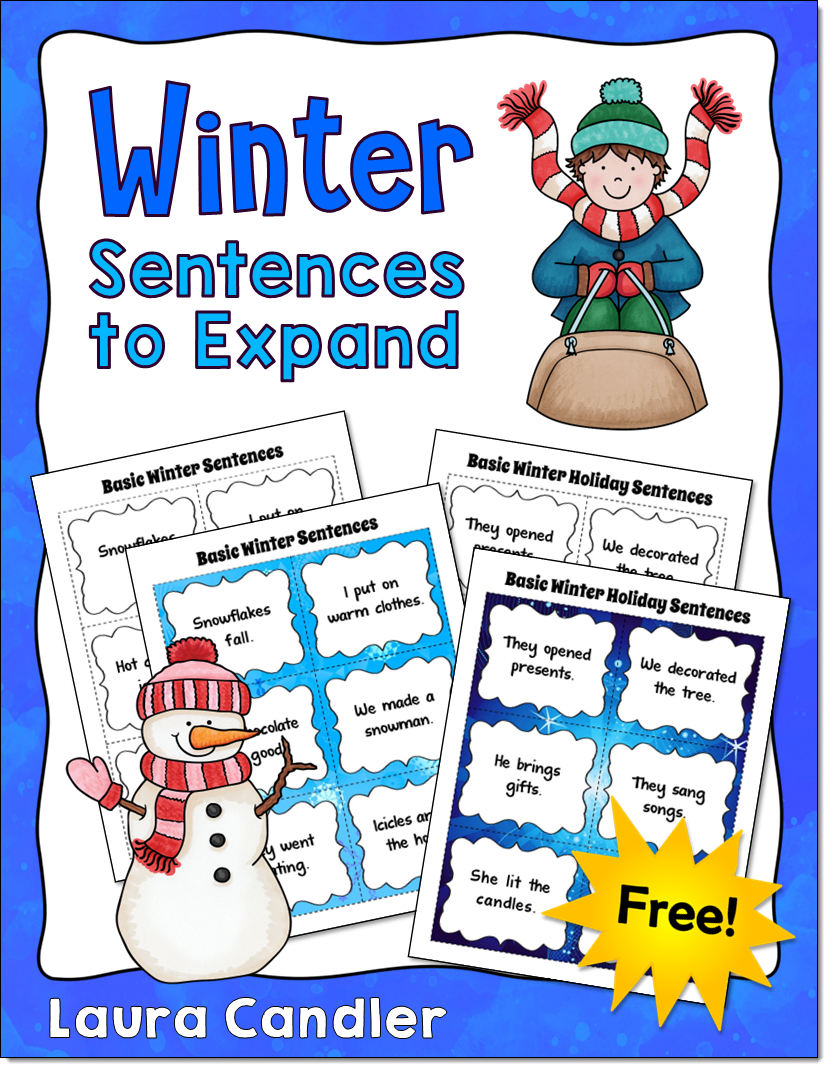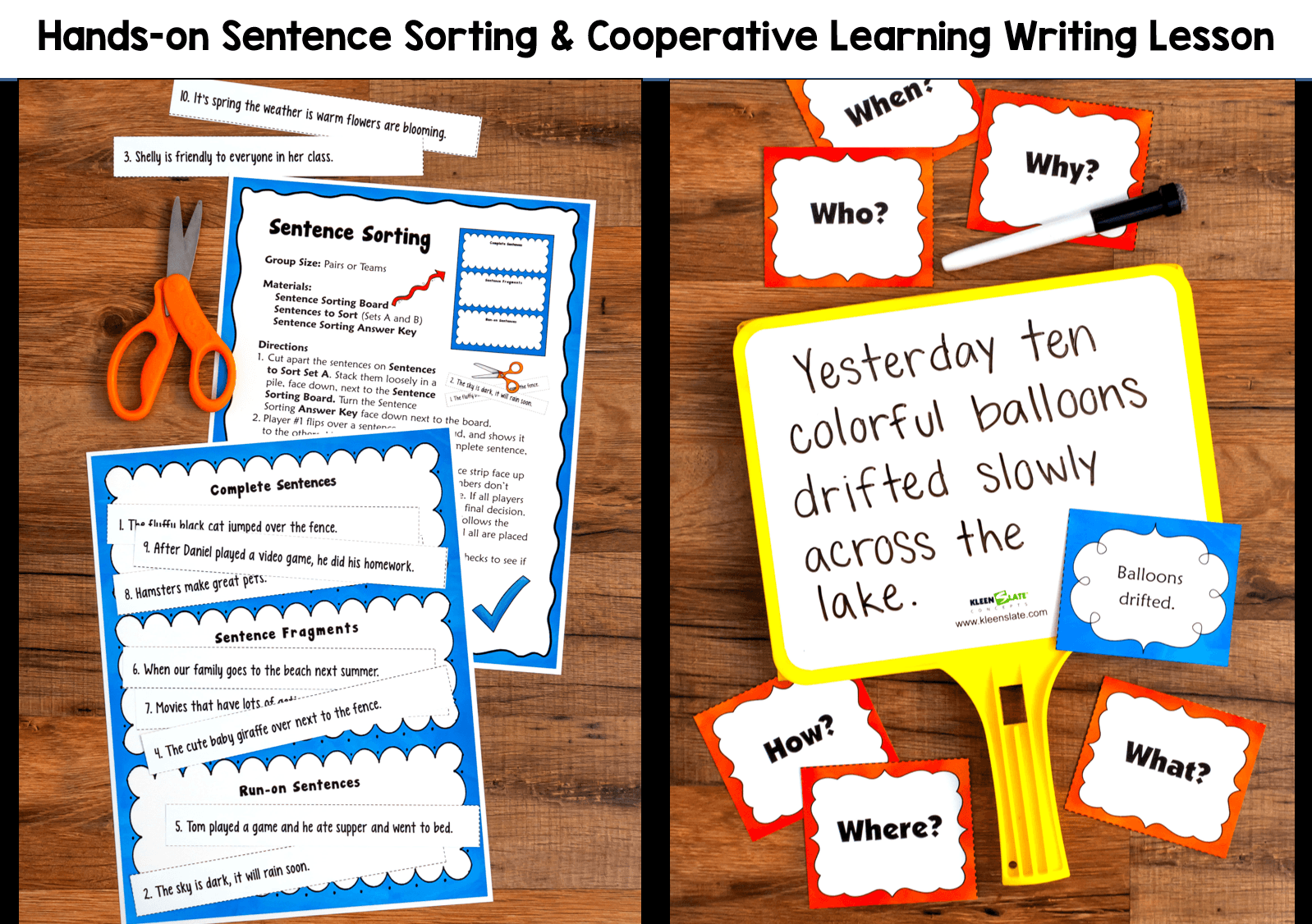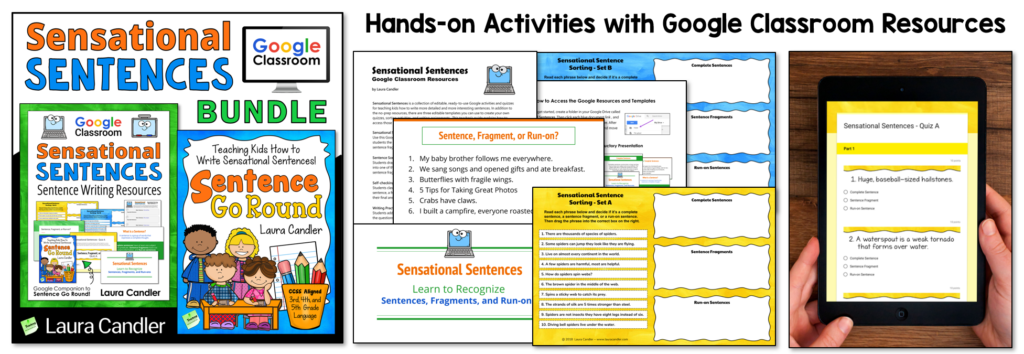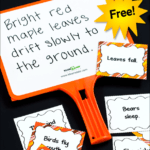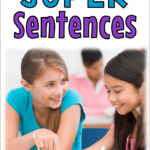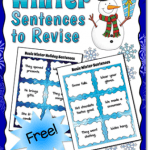Teaching Kids How to Write Super Sentences

How do you encourage your students to write longer, more interesting sentences? You know what will happen if you simply ask them to write longer sentences… they’ll just add more words to the end, resulting in long, rambling run-ons!
After struggling with this problem myself, I developed a method that helped my students learn how to turn boring sentences into super sentences. I began by teaching them the difference between fragments, run-ons, and complete sentences. Then we practiced revising and expanding basic “kernel” sentences to make them more interesting. Kernel sentences are simple, active, declarative sentences that don’t include any modifiers or connecting words.
After I modeled the activity and they practiced the skill in a whole group setting, they played a game called Sentence Go Round in their cooperative learning teams. The difference in their writing was dramatic! Before long, they were adding more detail to their sentences without creating run-ons in the process.
Step 1: Mini-Lesson on Sentences, Fragments, and Run-ons
Begin by explaining that complete sentences can be short or long, but they must have two basic parts, a subject and a predicate. The subject tells who or what the sentence is about, and the predicate is the action part of the sentence, or the part that tells what the subject is doing. If it’s missing one of those parts, it’s a fragment. If it has a whole string of sentences that run on and on without proper punctuation, it’s a run-on sentence.![]()
Next display a series of phrases or sentences and ask your students to decide if each on is a fragment, a complete sentence, or a run-on. Try these:
- Rabbits hop. (Your students will say it’s a fragment since it’s so short, but it’s actually a complete sentence.)
- The big brown fluffy rabbit in the garden. (Looks like a sentence, but it’s missing a predicate.)
- Rabbits love to eat carrots and one hopped into our garden and I thought it was cute even though it was eating the carrots. (A run-on of course … kids don’t usually have trouble spotting these, but you might want to have them find all the subjects and predicates to make your point.)
- The hungry rabbit hopped into the garden because he wanted to eat a carrot. (Even though this one is long, it’s not a run-on because it only had one subject and one predicate.)
Step 2: Mini-Lesson on Revising & Expanding Sentences
After your students can distinguish between fragments, run-ons, and complete sentences, it’s time for them to practice their sentence-writing skills by learning how to revise and expand kernel sentences. This activity should be modeled in a whole group or guided literacy group first, and older children can do the activity later in cooperative learning teams. To start the activity, you need a set of task cards with kernel sentences that lack detail. I used an example from the Fall Sentences to Expand freebie for this lesson, but you can use task cards from any of the seasonal freebies below.
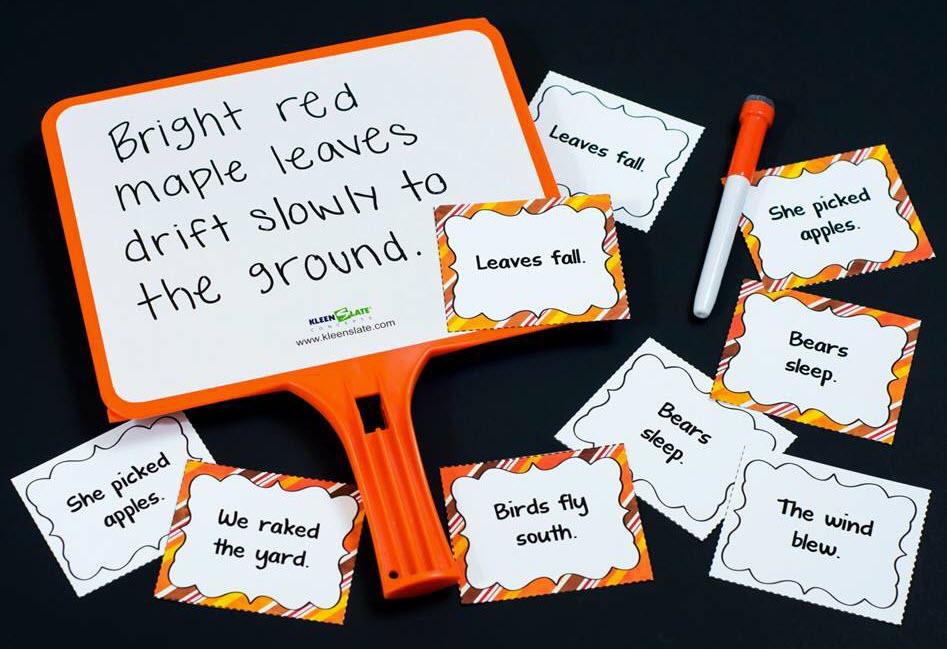
Whole Class Modeling:
- Start by selecting a kernel sentence from the Fall, Winter, Spring, or Summer task cards above. Let’s use the fall-themed sentence, “She picked apples.” Write the sentence on the board or show it to the class using a document camera.
- Explain that “She picked apples” is boring, but if we ask ourselves questions about it, we can add details that answer the question and make it more interesting. For example, if we ask “Who picked apples?” we can name someone specific. Demonstrate how to make the change as shown below.
- It’s still a boring sentence, so let’s ask, “How many?” and say that Mary picked a dozen apples.
- Go through the same process, each time repeating the revised sentence and asking another question. After 4 rounds of changes, it might look like the one in step 4 below.
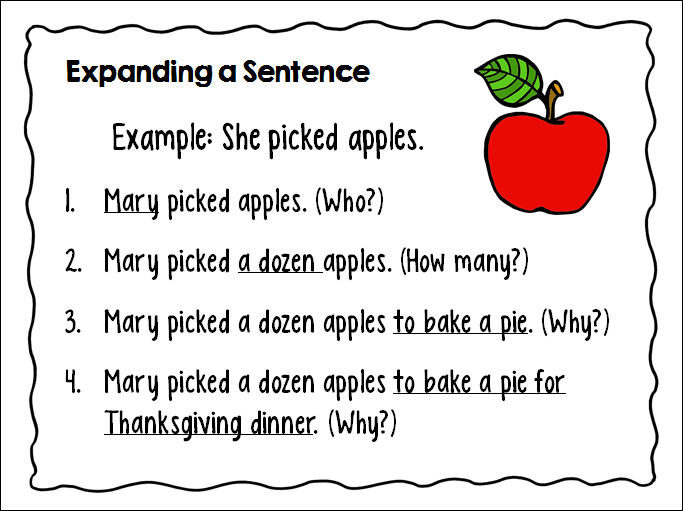
Whole Class Interactive Lesson:
- Next, repeat the process and actively involve your students. Ask one student to randomly select a sentence card and write it on the board.
- Then ask all students to think about a question they could ask and how they could revise the sentence to add one detail. It can be more than one word, but it shouldn’t be more than a short phrase that answers that question. If all students have individual dry erase boards or chalkboards, ask them to write down their revisions and show them to you.
- Call on one student to come forward and display his or her revised sentence.
- Repeat the process three or four more times until you’ve created a sentence that’s detailed and interesting, but not a run-on.

Modification Idea: If you notice that some students are creating run-on sentences, ask everyone to pair with a partner before sharing with the class to make sure all sentences are complete sentences.
Step 3: Cooperative Learning Writing Activity
The first two steps are the perfect segue into Sentence Go Round, an activity for cooperative learning teams or small groups to practice expanding sentences. The product below includes sample sentences for the teacher to display, as well as printables for students and a sorting activity to practice identifying fragments, run-ons, and complete sentences. Sentence Go Round also includes activity directions and question cards to prompt students as they are creating their new sentences. To preview the entire resource, click over to see Sentence Go Round in my TpT store.
Step 4: Google Classroom Sentence Writing Practice
It’s important to follow up with independent practice, so I’ve created some Google Classroom resources to supplement the cooperative learning, hands-on activities in Sentence Go Round. Sensational Sentences: Sentence Writing Practice includes a Google slide presentation to introduce the concepts, 2 digital sentence sorting activities, 2 self-checking Google Quizzes, 2 sentence writing activities, and 3 editable templates.
If you want to use the cooperative learning activity Sentence Go Round AND the Google Classrooms materials, check out my Sensational Sensational Sentences Bundle which includes both resources at a discounted price.
I hope your students enjoy these lessons and Sentence Go Round as much as mine did, and that they will soon be writing super sentences instead of boring ones!

